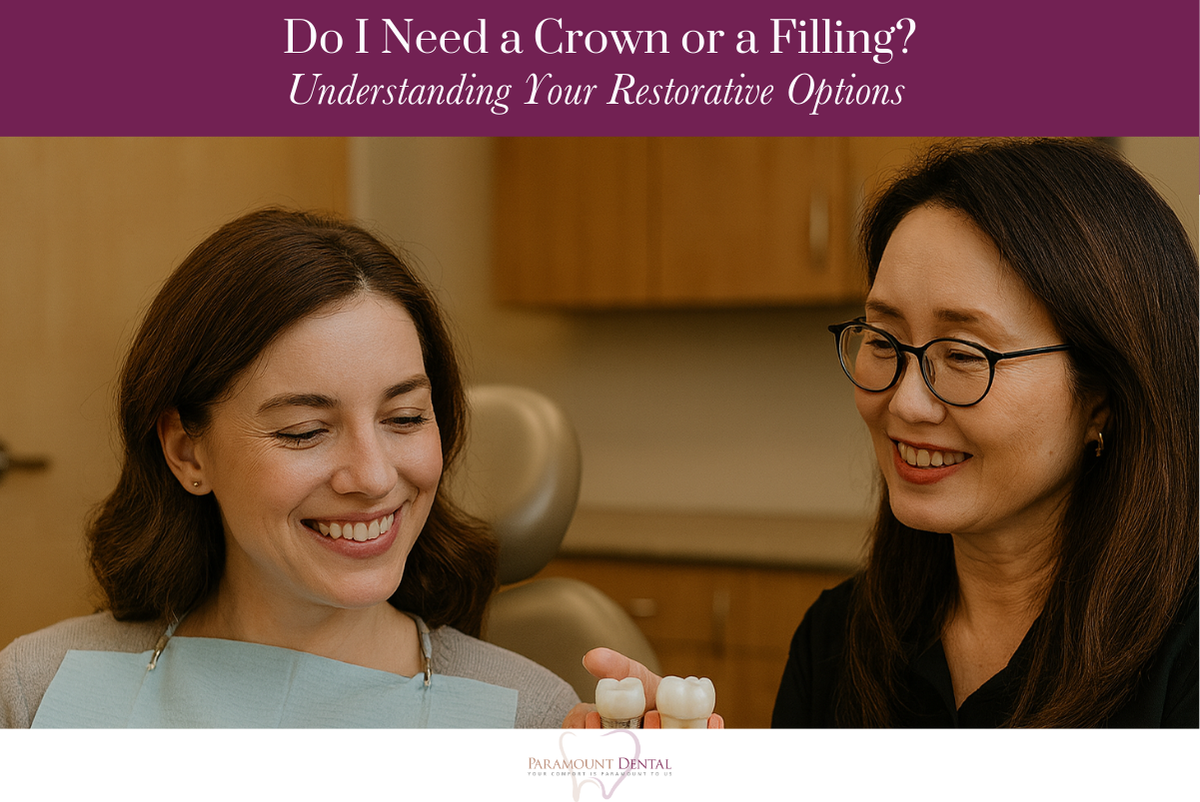When it comes to restoring damaged teeth, two of the most common treatments are fillings and crowns. While both protect your tooth and improve function, they are used in different situations. Understanding these restorative options can help you make informed decisions about your dental health—and why early intervention matters.
What Is a Dental Filling?
A filling is typically recommended when you have a small to moderate cavity or minor tooth damage. During the procedure, your dentist removes the decayed area of the tooth and replaces it with a durable material such as composite resin or amalgam.
Fillings are minimally invasive, preserve most of your natural tooth structure, and are often completed in a single visit.
What Is a Dental Crown?
A crown, sometimes called a “cap,” covers the entire tooth above the gumline. Crowns are used when a tooth is significantly weakened, cracked, or has extensive decay that a filling cannot adequately repair.
Crowns provide strength, restore chewing function, and improve aesthetics. They can be made from porcelain, ceramic, metal, or a combination, depending on your needs.
Why Early Intervention Matters
Cavities and cracks don’t heal on their own. Left untreated, small issues can progress into larger problems requiring more complex treatment—or even tooth loss. Seeing your dentist at the first sign of discomfort allows for simpler, more cost-effective solutions.
Q&A: Fillings vs. Crowns
Q: How do I know if I need a crown instead of a filling?
A: Generally, a filling is best for smaller areas of decay, while a crown is necessary if more than 50% of the tooth is compromised. Your dentist will evaluate your tooth’s strength and recommend the most appropriate option.
Q: Will a crown or filling look natural?
A: Yes. Modern tooth-colored fillings and porcelain crowns blend seamlessly with your natural teeth, restoring both function and appearance.
Q: How long do crowns and fillings last?
A: With good oral hygiene, fillings can last 7–10 years, while crowns typically last 10–15 years or longer. Regular checkups help extend their lifespan.
Q: Is one treatment more expensive than the other?
A: Fillings are generally less costly because they require less material and time. Crowns are a larger investment, but they provide critical protection for severely weakened teeth.
Q: Can delaying treatment make things worse?
A: Yes. A small cavity that could be fixed with a filling may grow into a severe problem requiring a crown—or even a root canal. Prompt treatment saves time, money, and discomfort.
Contact Paramount Dental
If you’re experiencing tooth sensitivity, pain, or have been told you need restorative treatment, our team at Paramount Dental can help you choose the best solution for your smile.
📍 Paramount Dental
2201 Double Creek Drive, #2001
Round Rock, TX 78664
📞 Phone: (512) 310-0330
🌐 Website: paramountdentaltexas.com

